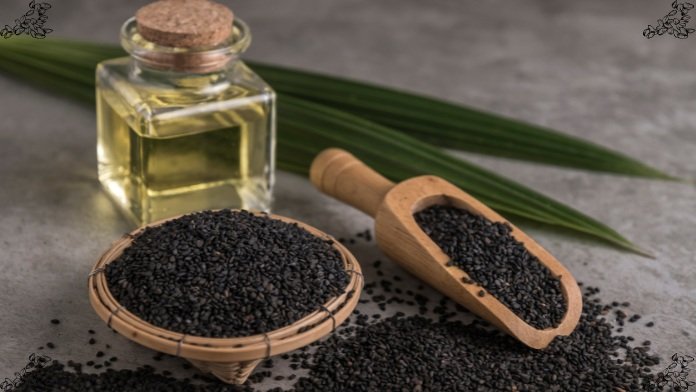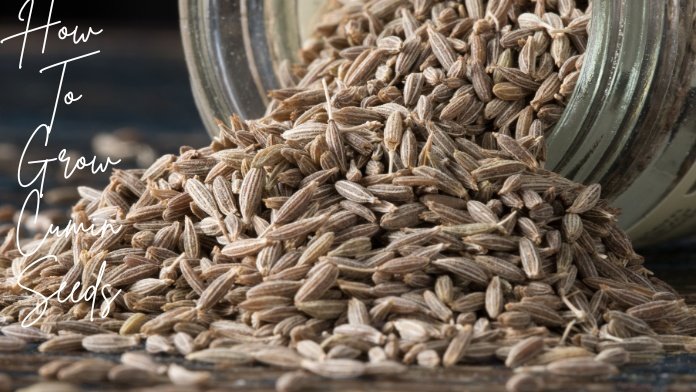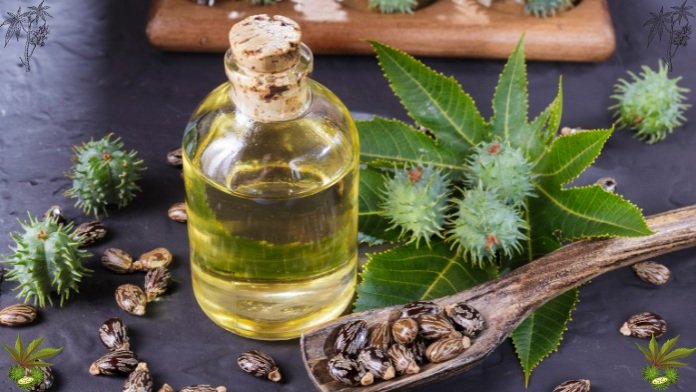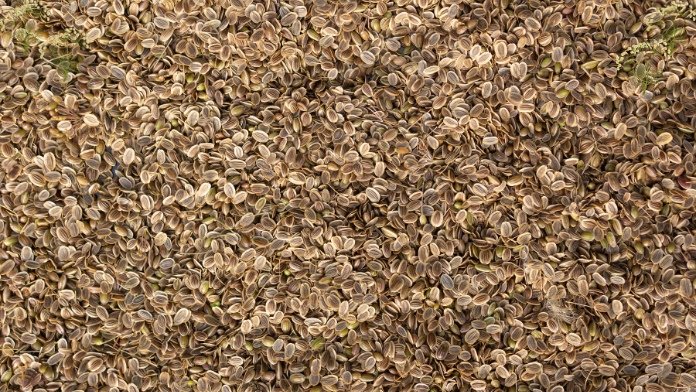The tiny, flat, oily seeds known as black sesame seeds are produced in the pods of the Sesamum indicum plant, which has been farmed for thousands of years.
Sesame seeds grow in black, brown, tan, grey, golden, and white, among other colours. While most black sesame seeds are grown in Asia, they are becoming more and more well-known worldwide.
Despite their small size, black seeds are very nutritious and flavorful. This guide will cover everything you need to know about black sesame seeds growing, caring, and benefits.
Black Sesame Seeds: What Are They?
One of the first oilseed crops that humans have ever grown is the Sesamum indicum plant, which yields black sesame seeds. Over 3,500 years have passed since these seeds were first cultivated in Africa and India.
Nutritional Profile Packed with vital nutrients, seeds include:
Monounsaturated and polyunsaturated fats are the main types of healthy fats.
Protein: Five grams for every tablespoon.
Fiber: Promotes healthy gut flora and digestion.
Minerals and vitamins: Rich in zinc, iron, magnesium, and calcium.
Cultivating Dark Sesame Seeds
Warm, sunny temperatures are ideal for sesame seeds to flourish. They need neutrally pH soil that drains properly. Pick a spot that receives six to eight hours of sunlight each day.
Preparing the Soil
Preparing the soil by incorporating compost or other organic materials will enhance fertility and drainage. Also, make sure there are no weeds and the soil is loose.
Sowing Seeds
After the last frost:
- Plant seeds directly into the ground.
- Plant seeds 6 to 12 inches apart, about 1/2 inch deep.
- After planting, give the soil a little water to settle it.
Applying fertilizer and water
Watering black sesame plants moderately is necessary. Make sure the soil is constantly damp but not drenched. Throughout the growing season, fertilize the plants every four to six weeks using a balanced fertilizer.
Diseases and Pests
Black sesame plants do not have excellent pest resistance. However, they are vulnerable to common garden pests like caterpillars and aphids. Use organic pest control techniques as needed.
Harvesting
When the seed pods turn brown and start to crack apart, it’s time to harvest.
- To finish drying, cut the stalks and hang them upside down in a dry, well-ventilated room.
- Shake the seeds out of the pods after they are scorched.
- How to Handle Black Sesame Plants
Trimming
Black sesame plants usually do not require pruning. Nonetheless, getting rid of unhealthy or broken leaves can help encourage strong development.
Mulching
Mulch the area around the plants to keep moisture in and prevent weed growth. Wood chips or straws are good examples of organic mulches.
Planting companion plants
Corn and beans are companion plants that grow well with black sesame plants. These can increase soil fertility and lessen pest issues.
Advantages of Dark Sesame Seeds
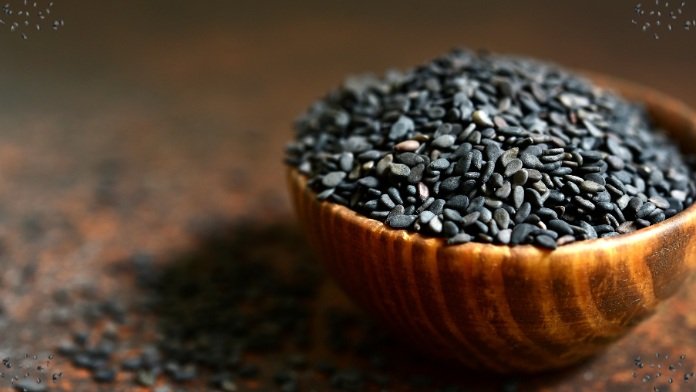
Packed with Antioxidants
Antioxidants found in black sesame seeds, especially sesamin and sesamolin, assist in combatting oxidative stress and may lower the incidence of chronic illnesses.
Encourages Heart Health
It’s include heart-healthy lipids that can help lower dangerous cholesterol levels and enhance cardiac health. Additionally, the magnesium concentration aids in blood pressure regulation.
Bone Well-being
sesame seeds have a high calcium level, which helps maintain healthy bones and teeth. This makes them particularly useful for people who are allergic to or intolerant to dairy products.
Enhances Digestion
sesame seeds’ fibre contributes to digestive health by encouraging regular bowel movements and preventing constipation.
Improves Hair and Skin
Zinc and B vitamins are among the many vitamins and minerals that support skin health and encourage hair development.
Comparing Black and White Sesame Seeds
Sesame seeds are highly valued for their rich and nutty taste and nutritious content. The most popular varieties are black and white sesame seeds.
Despite their many commonalities, they differ greatly in terms of flavour, nutritional value, and culinary applications.
This is an extensive comparison:
Black Sesame Seeds vs. White Sesame Seed
Sesame seeds, cherished for their rich nutty flavour and nutritional value, come in various colours, with black and white sesame seeds being the most common. While they share many similarities, they also possess distinct differences in taste, nutrition, and culinary uses.
Here’s a comprehensive comparison:

Appearance
- Black Seeds:
- Dark, blackish-brown colour.
- Slightly smaller than white sesame seeds.
- Often retain their hulls.
- White Seeds:
- Creamy white colour.
- Slightly larger.
- Usually hulled, meaning the outer shell is removed.
Flavor
- Black Seeds:
- Stronger, more robust flavour.
- Slightly bitter undertones.
- More intense nutty aroma.
- White Seeds:
- Milder, sweeter taste.
- Subtle nutty flavour.
- Less intense aroma compared to black sesame seeds.
Nutritional Content
- Black Seeds:
- Richer in certain nutrients due to the hull.
- Higher in calcium, iron, and antioxidants.
- Contains lignans and phytosterols, which may contribute to health benefits.
- White Seeds:
- Slightly lower in calcium and iron.
- High in protein and healthy fats.
- Good source of fibre, B vitamins, and minerals like magnesium and zinc.
Culinary Uses
- Black Seeds:
- Common in Asian cuisine, especially in Chinese, Japanese, and Korean dishes.
- Used in desserts like black sesame soup and ice cream.
- Often sprinkled on top of sushi, salads, and stir-fries.
- Used in baking, especially in bread and pastries.
- White Seeds:
- Widely used as a garnish on bread, bagels, and crackers.
- Essential ingredient in tahini, a paste used in Middle Eastern dishes like hummus.
- Adds a crunchy texture to salads, stir-fries, and noodle dishes.
- Often roasted to enhance the flavour before use.
Health Benefits
- Black Seeds:
- Potentially higher antioxidant properties due to the hull.
- It may support bone health and reduce the risk of osteoporosis.
- Believed to aid in detoxification and promote healthy skin and hair.
- White Seeds:
- Supports heart health due to healthy fats and fibre.
- Helps in managing cholesterol levels.
- Supports digestive health and provides essential nutrients for overall wellness.
Benefits to Health of Black Sesame Seeds
- Husks may contribute to potentially increased antioxidant qualities.
- It might promote bone health and lower the chance of developing osteoporosis.
- Regarded to support healthy skin and hair and help with detoxification.
- Because they include fibre and healthy fats, white sesame seeds are good for your heart.
- Aids in controlling blood cholesterol levels.
- Supplies vital nutrients for general wellness and supports the health of the digestive system.
Black sesame seeds’ culinary applications in classic Dishes
A common ingredient in many Asian dishes is black sesame seeds.
They are utilized in recipes like:
- Gomashio: A salt and crushed sesame seed spice from Japan.
- Chinese desserts sometimes include sesame balls.
- Tahini: A popular paste in Middle Eastern cooking, formed from ground sesame seeds.
Contemporary Recipes
Beyond their customary applications, it can be used in contemporary dishes such as:
Smoothies: You can increase the nutritional content of your smoothie by mixing in a spoonful of black sesame.
Baked Goods: To add crunch and flavour, sprinkle them on toast or muffins.
Salads: To give a nutty flavour to salads, sprinkle them on top.
How to Eat Black Sesame Seeds
Easy and Simple Methods
Breakfast can be quickly enriched with nutrients by adding a small amount of yogurt or oatmeal.
Blend into quinoa or rice to boost nutrition and improve flavour.
Blend into salads or sauces to add a distinct flavour and texture.
Applications
A popular beverage created by combining milk, sugars, and black sesame seeds is the black sesame latte.
Bars of Energy
For a nutritious snack, mix black seeds with almonds and dried fruits.
Examining Sesame Seed Oil Black
Another helpful product of these seeds is black sesame seed oil. It is well-known for its intense flavour and several health advantages, which include uses for skin and hair care.
It can be applied topically for its moisturizing qualities or used in cooking to improve the flavour of food.
Tips for Buying and Storing Black Sesame Seeds
- To preserve their freshness and avoid rancidity, kindly store them in an airtight container.
- Keep stored in a cold, dark area: prolongs shelf life by shielding against heat and light.
Where to Purchase
sesame seeds are carried by most health food stores, Asian markets, and internet merchants. For the highest quality, choose organic and non-GMO products.
Possible Adverse Reactions and Pointers,
Hypersensitivity
Although it is unusual, some people can have a sesame seed allergy. Possible symptoms include itching, hives, and, in extreme situations, anaphylaxis.
Moderation
Although nutrient-dense, it should be used in moderation, significantly if you are limiting your calorie intake due to their high-calorie content.
Conclusion
Black sesame seeds are a nutritional and flavour powerhouse. These little seeds have many advantages, whether your goal is to enhance your health, add a distinctive flavour to your food, or enjoy their extensive history.
FAQ
Do black sesame seeds aid in the growth of hair?
Yes, the nutrients and vitamins included in black sesame seeds, including zinc and B vitamins, help to maintain healthy hair and may even spur growth.
Do black sesame help people lose weight?
Because black sesame seeds are high in protein and fibre, which keep you complete, you can include them in a weight loss diet. But keep in mind that they are high in calories, so eat them sparingly.
Can I bake with sesame seeds?
Of course! They can give baked items like bread, muffins, and cookies a crunch and nutty flavour.
Can eating black sesame have any adverse effects?
Although generally harmless, allergic reactions can happen to some people. Owing to their high-calorie content, moderation is key when consuming them.
How is black sesame paste made?
After toasting the seeds until aromatic, ground them finely. Blend till smooth, adding a tiny bit of oil if needed.
RELATED POSTS
View all
